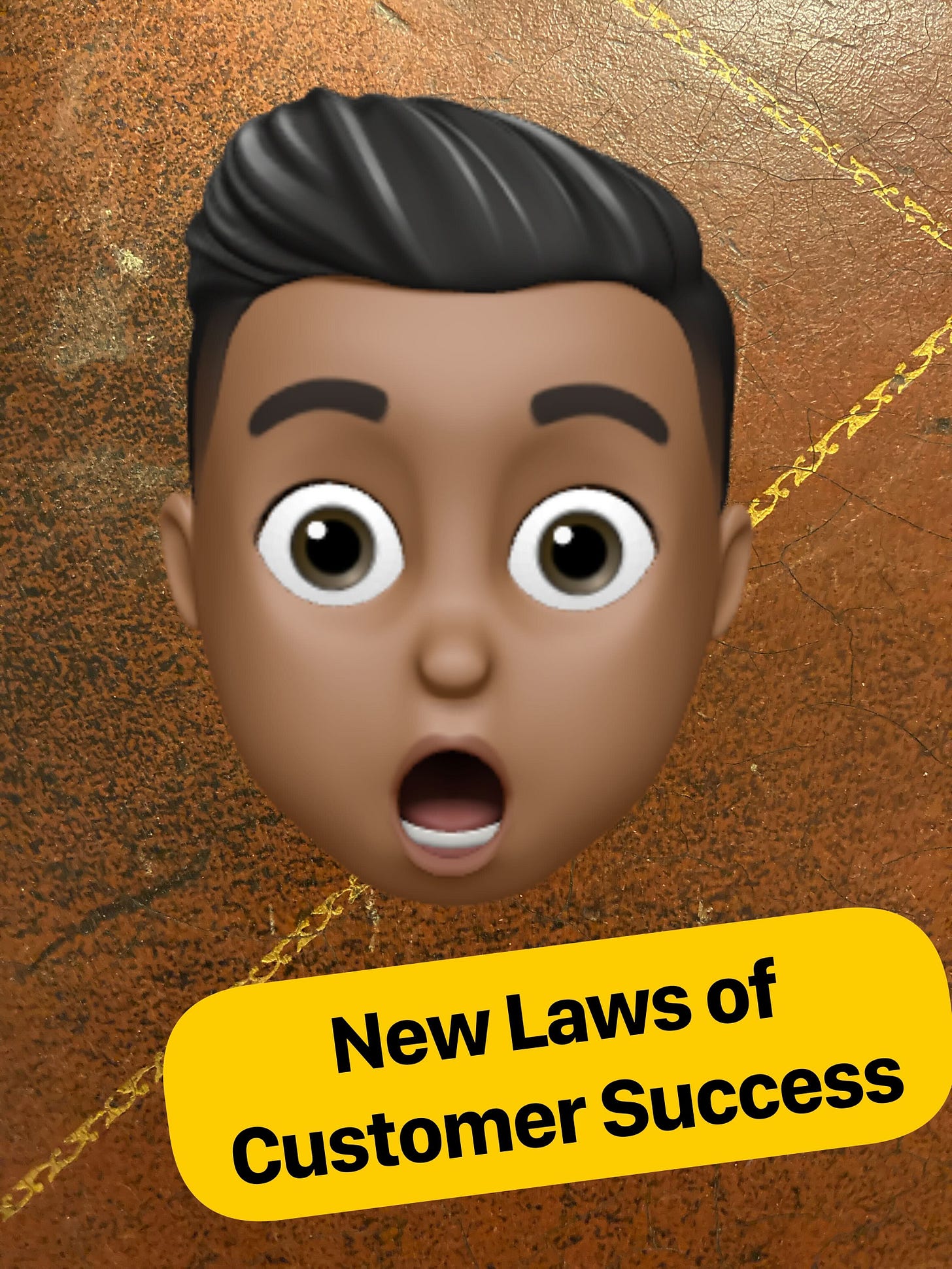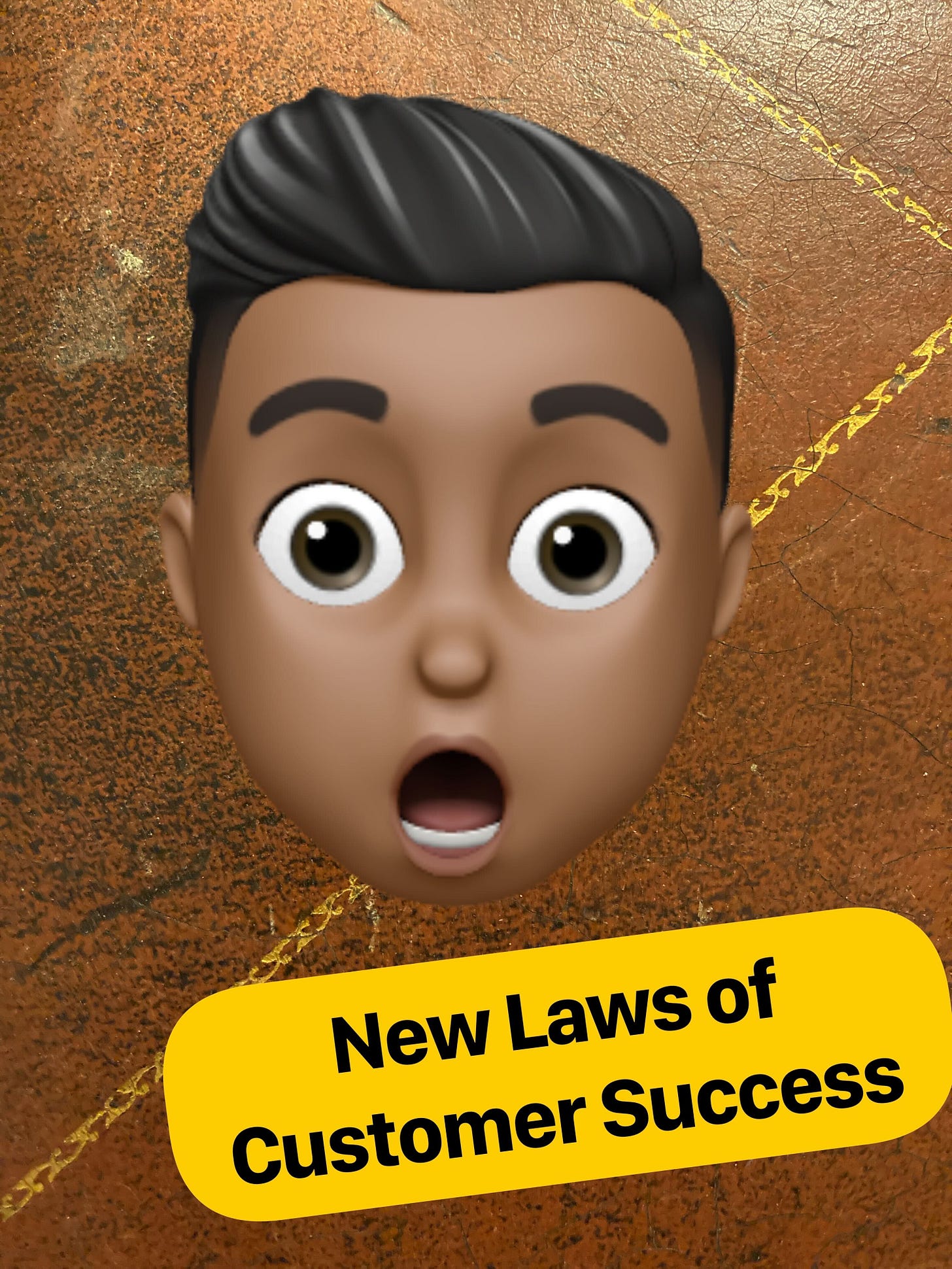The Way You Influence Customers Will Totally Change Once You Use This Habit (#8)
Change Management: A lesson I'm learning from Denzel Washington
Trivia Time: What film included Denzel Washington, Hayden Panettiere, and Ryan Gosling?
3… 2…1…
Did you get it?
Answer: Remember The Titans.

One of my favorite movies. It was released on September 23, 2000, and did 136.8 million dollars at the box office.
2000s were a time when the ball dropped for Y2K, Apple introduced the iPod, Razr phones were a status symbol, and Denzel Washington shared major life lessons in the lead role as Coach Boone.
So, here’s what I got for ya today:
- How to drive customer adoption (get your customers to do the work for you)
What I’m learning:
I’m learning that adoption isn’t just about asking new people to use my technology.
Instead, I’m asking people to change the way they work.
Example: If I was a CSM @ Slack, I’m not asking employees to use Slack. I’m asking them to change the way they communicate.
And this adjustment can be challenging. Like, extremely difficult.
This is because people adopt certain habits over time - "I've always done X this way"
And... the emotion associated with "trying something new" varies from person to person.
Some individuals enjoy this, while others require a bit more time.
This was a big lesson in the movie (Remember the Titans)
“Change is The Key to Success”
In order for Denzel Washington's Coach Boone to unify all of his players and coaches and develop a great football team, he has to change the way the team practices on the field as well as how they live and think off of it.
A famous line from the movie -
Everything we do is change. We gon' change the way we run. We gon' change the way we eat. We gon' change the way we block. We gon' change the way we tackle. We gon' change the way we win.
Which got me thinking about the approach I'm using to initiate driving complex change in the hopes of boosting adoption.
Right now, my process has 6 steps:
Assemble the team
Hype up the team
Document the fixes
Prioritize
Delegate
Track Results
Assemble the team
I identify with my primary contact all employees who may wind up owning a mini-project as part of the process of pushing adoption.
A great question to ask -
”Sara, is there anyone else that might feel left out of the conversation if we didn’t include them?”
It’s the equivalent of “would you like fries with that”
There may be some who say no, but there will also be some who say yes.
Then, I'll have the primary point of contact provide an introduction, or I'll send everyone an email requesting a meeting.
Hype up the team
For this piece I don’t utilize any decks. Instead, I screen share a working Google doc.
To energize everyone at the beginning of this team meeting, I will try my best to set the stage and hype everyone by verbalizing what I wrote on the Google doc
(I construct this Google doc to capture my current understanding before my meeting.)
Document the fixes
After hyping everyone up, I ask them to validate some of the company-related observations I've made thus far.
I ask:
”I’d love to dive deeper there. Why do you think this is happening?”
“Hmm… that’s interesting. I have some customers that have gone through something similar. What do you think we should do to fix this?”
Now it’s my turn to shut up, listen, and write down their thoughts on the Google doc. I tend to clean it up after the meeting.
Prioritize
Some problems are big. Others, not so much.
I try to figure out the problems that would cause the biggest relief.
I'll ask -
“We have a ton of tasks to complete but limited time. What are the top three items on this list that must be addressed in the next three weeks before anything else?"
The ideal problems we want to solve are as follows:
1) Simple to carry out, high impact
2) Simple to execute and low-impact (this item contributes to momentum). It keeps everyone motivated to check items off the list.
Delegate
I try to assign owners to the problems we need to fix. I can only do so much.
At the end of the meeting, I will summarize everyone's responsibilities.
When people agree (in front of their peers) on what they're responsible for at a large meeting, I've found that accountability arises organically.
Track Results
I will establish a monthly sync to maintain accountability and identify roadblocks.
And at the end of the meeting, I will wrap it up by saying -
"I'm pretty excited about this, team. Thank you for showing up the way you all did today. I hope you gained some insight into my working style. I am certain that this team was assembled for a reason, despite how difficult this might be. I mean, can you imagine how the business will operate if we succeed?!?! Either way, have a wonderful day. I will send a summary email, and I hope to speak with you soon.
Now, a quick question for you: If helping a friend didn't cost you anything and you never got credit for it, would you do it?
I'd like to make a request on behalf of that friend, if you don't mind. That friend is the same as you, or was the same as you a few years ago: they want to be a great Customer Success professional, but they don't know where to look. Here's where you come in.
The only way for us to accomplish our goals at NLCS is first, by reaching them. And most people do, in fact, judge a book by its cover. In this case, judge a newsletter by its logo, and captions. If you believe in our purpose, we'd be grateful if you'd take a few seconds out of your day to share this newsletter with two of your friends who might appreciate it. It will cost you zero dollars and less than 60 seconds.
You sharing this newsletter will help…
…one more person working in Customer Success feel less isolated and lonely
...help one more Customer Success professional make a customer happy
...and help one more CSM find purpose in their job
All you have to do to make that happen is copy this link and tell them to subscribe.
That’s it for this week though - lmk - how’d I do? I really enjoyed breaking down this topic
Ya boi / friend @ NLCS
Until next time my friend :-)
RK






